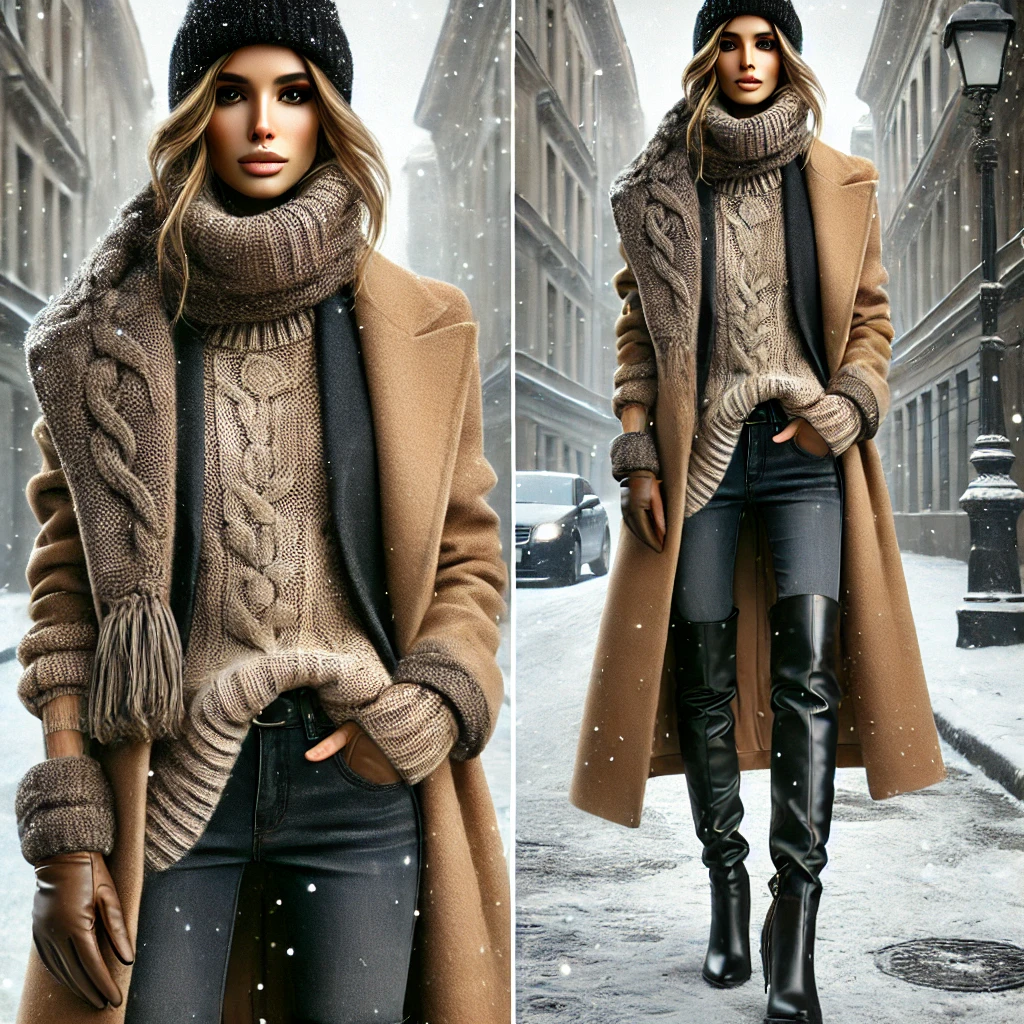Layering turns from a necessity to an art form as the temperature drops and the chill sets in. The ideal layers improve your style quotient in addition to keeping you warm. Learning how to layer may turn your winter wardrobe into a functional, stylish toolkit that you can wear to work, a friend’s house, or a park in the snow.
I’ll go over useful advice, design trends, and basics for layering this winter in my blog. Let’s jump in and stay warm while looking chic!
Why Layering Matters
There is more to layering than just putting on more clothing to be warm. It concerns:
Functionality: Maintaining your warmth without limiting your range of motion.
Versatility: The ability to modify layers in response to temperature changes.
Style: Giving your ensemble depth, character, and texture.
You may strike a balance between comfort and style by selecting the appropriate layers.
The Basics of Layering
Three essential elements usually make up layering:
1. The Foundational Layer
Its function is to wick away moisture and retain body heat.
Fabrics: Choose synthetic materials made for insulation, thermal wear, or merino wool.
For instance, long-sleeved t-shirts, lightweight thermal leggings, or a fitting turtleneck.
2. The Intermediary Layer
The goal is to add more warmth.
Fabrics: Down, wool, or fleece.
Quilted vests, cardigans, and chunky sweaters are a few examples.
3. The External Layer
Protecting against wind, rain, and snow is the goal.
Fabrics: Materials that are resistant to weather, wind, and water.
For instance, trench coats, puffer jackets, or parkas.
Style Tips for Layering
Neutrals should come first.
To make your base layers readily blend in with your middle and outer layers, keep them neutral (white, black, beige, or gray).
Experiment with Textures
For a chic, tactile look, pair textures like knit sweaters with wool coats or leather jackets.
Put on your belt.
Belts can be used to tighten loose layers and give your silhouette rigidity and shape. This looks great with large coats or long cardigans.
Purchase Versatile Items
There are several ways to style a wool cape, a tailored blazer, or a traditional trench coat. Choose items that are appropriate for both professional and informal contexts.
Try Different Lengths
Combine longer garments, such a dress or tunic, underneath shorter coats. Alternately, wear a flowing maxi dress with a cropped jumper.
Think About Your Accessories
Gloves, hats, scarves, and bold jewelry may add flair to your layered outfit while keeping you warm.
Avoid These Common Mistakes
Layers That Are Too Bulky
Steer clear of adding heavy layers that hinder mobility. Choose lighter, insulated materials instead, which offer warmth without adding bulk.
Disregarding Proportions
The key is balance. Wear fitting bottoms with big outerwear, or the other way around.
Color and pattern mismatch
For a harmonious effect, choose a consistent color scheme and mix patterns judiciously.
Cold weather layering is both a science and an art. Understanding the concepts of proportion, texture, and utility will help you design comfortable yet effortlessly fashionable ensembles. Don’t allow the cold make you less stylish in winter. Embrace layering as a means of expressing your individual style instead.
Stay warm, bundle up, and never stop killing it in the fashion world!
